 W
WThe Alhucemas landing was a landing operation which took place on 8 September 1925 at Alhucemas by the Spanish Army and Navy and, in lesser numbers, an allied French contingent, that would put an end to the Rif War. It is considered the first amphibious landing in history involving the use of tanks and massive seaborne air support.
 W
WOperation Banquet was a British naval operation in World War II, under the command of Rear Admiral Clement Moody. The objective was to carry out aerial strikes on Japanese positions in and around Padang, on the southwestern coast of Sumatra, Indonesia, on 24 August 1944. The forces involved successfully struck the primary targets of the attack, these being the Padang airfield, the Indaroeng cement works, and the harbor facilities and shipping at Emmahaven.
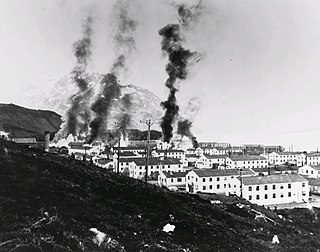 W
WThe Battle of Dutch Harbor took place on June 3–4, 1942, when the Imperial Japanese Navy launched two aircraft carrier raids on the Dutch Harbor Naval Operating Base and U.S. Army Fort Mears at Dutch Harbor on Amaknak Island, during the Aleutian Islands Campaign of World War II. The bombing marked the first aerial attack by an enemy on the continental United States, and was the second time in history that the continental U.S. was bombed by someone working for a foreign power, the first being the bombing of Naco, Arizona by Patrick Murphy despite being an accident.
 W
WOn 9 February 1945, a force of Allied Bristol Beaufighter aircraft suffered many losses during an attack on the German destroyer Z33 and its escorting vessels; the operation was called "Black Friday" by the Allied survivors. The German ships were sheltering in a strong defensive position in Førde Fjord, Norway, forcing the Allied aircraft to attack through massed anti-aircraft fire.
 W
WThe Bluff Cove air attacks occurred 8 June 1982, during the Falklands War. British troop transport ships were bombed by the Argentine Air Force (FAA) whilst unloading, with significant damage and casualties.
 W
WThe Action off Bougainville was a naval and air engagement on the South Pacific Theater of World War II near Bougainville, Papua New Guinea on 20 February 1942. A United States Navy aircraft carrier task force on its way to raid the Imperial Japanese military base at Rabaul, New Britain was attacked by a force of land-based bombers of the Imperial Japanese Navy. The US task force was commanded by Admiral Wilson Brown and the Japanese aircraft forces were under the command of Eiji Gotō.
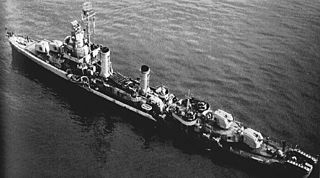 W
WThe Action off Cape Bougaroun, or the Attack on Convoy KMF-25A was a Luftwaffe action against an Allied naval convoy off the coast of Algeria during World War II. The convoy of American, British, Greek and Dutch ships was attacked on 6 November 1943 by 25 German land based aircraft. Six Allied vessels were sunk or damaged and six German aircraft were destroyed. German forces achieved a tactical victory, though the Allied warships involved received credit for defending their convoy and reacting to their losses quickly. The quick response led to the rescue of over 6,000 service men and civilians without further loss of life.
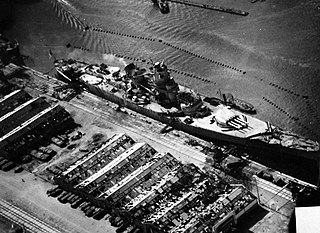 W
WThe Naval Battle of Casablanca was a series of naval engagements fought between American ships covering the invasion of North Africa and Vichy French ships defending the neutrality of French Morocco in accordance with the Second Armistice at Compiègne during World War II. The last stages of the battle consisted of operations by German U-boats which had reached the area the same day the French troops surrendered.
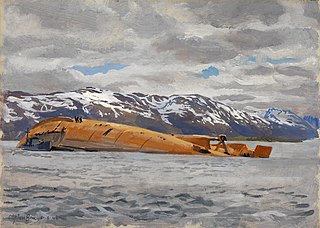 W
WOperation Catechism was a British air raid of World War II that destroyed the German battleship Tirpitz. It was conducted on 12 November 1944 by 29 Royal Air Force heavy bombers that attacked the battleship at its anchorage near the Norwegian city of Tromsø. The ship capsized after being hit by at least two bombs and damaged by the explosions of others, killing between 940 and 1,204 members of the crew; the British suffered no casualties.
 W
WThe Channel Dash or Unternehmen Zerberus was a German naval operation during the Second World War. A Kriegsmarine squadron comprising the two Scharnhorst-class battleships, the heavy cruiser Prinz Eugen and their escorts ran a British blockade from Brest in Brittany to German ports. Scharnhorst and Gneisenau had arrived in Brest on 22 March 1941 after the success of Operation Berlin in the Atlantic. More raids were planned and the ships were refitted at Brest. The ships were threat to Allied trans-Atlantic convoys and RAF Bomber Command attacked them from 30 March 1941. Gneisenau was hit on 6 April 1941 and Scharnhorst on 24 July 1941, after dispersal to La Pallice. In late 1941, Adolf Hitler ordered the Oberkommando der Marine to plan an operation to return the ships to German bases against a British invasion of Norway. The short route up the English Channel was preferred to a detour around the British Isles for surprise and air cover by the Luftwaffe and on 12 January 1942, Hitler gave orders for the operation.
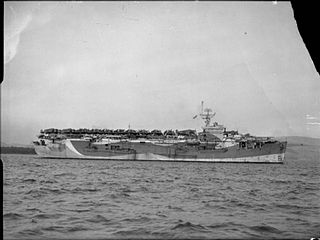 W
WOperation Collie was a British naval operation in World War II, from 5–11 July 1945. Its objectives were, firstly, naval bombardment and aerial strikes on Japanese positions in the Nicobar Islands, particularly on Nancowry Island; secondly, providing cover for minesweeping operations in advance of a possible invasion; and thirdly, making carrier raids on Japanese airfields in northern Sumatra. These measures were a prelude for an invasion, Operation Zipper, which was never carried out due to the Surrender of Japan.
 W
WThe Battle of the Coral Sea, from 4 to 8 May 1942, was a major naval battle between the Imperial Japanese Navy (IJN) and naval and air forces of the United States and Australia. Taking place in the Pacific Theatre of World War II, the battle is historically significant as the first action in which aircraft carriers engaged each other and the first in which the opposing ships neither sighted nor fired directly upon one another.
 W
WThe Battle of Crete was fought during the Second World War on the Greek island of Crete. It began on the morning of 20 May 1941, when Nazi Germany began an airborne invasion of Crete. Greek and other Allied forces, along with Cretan civilians, defended the island. After one day of fighting, the Germans had suffered heavy casualties and the Allied troops were confident that they would defeat the invasion. The next day, through communication failures, Allied tactical hesitation and German offensive operations, Maleme Airfield in western Crete fell, enabling the Germans to land reinforcements and overwhelm the defensive positions on the north of the island. Allied forces withdrew to the south coast. More than half were evacuated by the British Royal Navy and the remainder surrendered or joined the Cretan resistance. The defence of Crete evolved into a costly naval engagement; by the end of the campaign the Royal Navy's eastern Mediterranean strength had been reduced to only two battleships and three cruisers.
 W
WOperation Crimson was a British-led naval operation in World War II, the objective being simultaneous naval bombardment and aerial strikes on Japanese airfields in the Indonesian cities of Sabang, Lhoknga and Kutaraja, to be launched from aircraft carriers in the Indian Ocean on 25 July 1944.
 W
WDixie Station was a geographic position during the Vietnam War in the South China Sea off the Mekong Delta from which United States Navy aircraft carriers launched strikes providing close air support for American and Army of the Republic of Vietnam (ARVN) ground troops in South Vietnam. It was located about 130 km due southeast of Cam Ranh Bay, at 11° N and 110° E in 600 m of water.
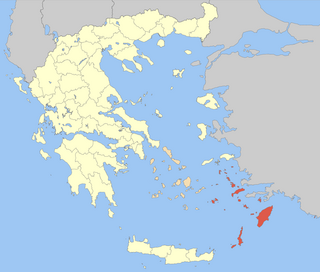 W
WThe Dodecanese campaign of World War II was an attempt by Allied forces to capture the Italian-held Dodecanese islands in the Aegean Sea following the surrender of Italy in September 1943, and use them as bases against the German-controlled Balkans. Operating without air cover, the Allied effort failed, with the whole of the Dodecanese falling to the Germans within two months, and the Allies suffering heavy losses in men and ships. The Dodecanese campaign, lasting from 8 September to 22 November 1943, resulted in one of the last major German victories in the war.
 W
WThe Battle of the Eastern Solomons was fought August 23–25, 1942 in the waters east and northeast of the Solomon Islands by forces of the Imperial Japanese Navy's Combined Fleet and the US Navy's Pacific Fleet. The battle resulted from a major effort by the Japanese to reinforce their troop strength on the island of Guadalcanal. The Japanese high command had realized this reinforcement was necessary following the annihilation of the Ichiki Detachment by the 1st Marines a few days earlier.
 W
WThe Battle off Endau was a Second World War battle that took place off Endau on 26–27 January 1942. Part of the Battle of Malaya, it was the first notable naval engagement since the sinking of the battleship Prince of Wales and the battlecruiser Repulse on 10 December 1941, and the last effort by the Royal Navy to intercept Japanese convoy shipping around the Malay Peninsula.
 W
WOperation Excess was a series of British supply convoys to Malta, Alexandria and Greece in January 1941. The operation encountered the first presence of Luftwaffe anti-shipping aircraft in the Mediterranean Sea. All the convoyed freighters reached their destinations. The destroyer Gallant was disabled by Italian mines and Axis bombers severely damaged the cruiser Southampton and the aircraft carrier Illustrious.
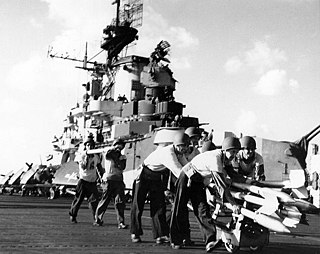 W
WThe Formosa Air Battle, 12–16 October 1944, was a series of large-scale aerial engagements between carrier air groups of the United States Navy Fast Carrier Task Force, and Japanese land-based air forces of the Imperial Japanese Navy (IJN) and Imperial Japanese Army (IJA).
 W
WOperation Frequent Wind was the final phase in the evacuation of American civilians and "at-risk" Vietnamese from Saigon, South Vietnam prior to the takeover of the city by the North Vietnamese People's Army of Vietnam (PAVN) in the Fall of Saigon. It was carried out on 29–30 April 1975, during the last days of the Vietnam War. More than 7,000 people were evacuated by helicopter from various points in Saigon. The airlift resulted in a number of enduring images.
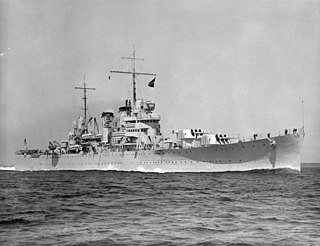 W
WThe amphibious Battle of Gela was the opening engagement of the American portion of the Allied Invasion of Sicily during World War Two. United States Navy ships landed United States Army troops along the eastern end of the south coast of Sicily; and withstood attacks by Luftwaffe and Regia Aeronautica aircraft while defending the beachhead against German tanks and Italian tanks of the Livorno Division until the Army captured the Ponte Olivo Airfield for use by United States Army Air Forces planes. The battle convinced United States Army officers of the value of naval artillery support, and revealed problems coordinating air support from autonomous air forces during amphibious operations.
 W
WOn 20 November 1943, simultaneous landings were made by United States Marine Corps forces on Tarawa and United States Army forces on Makin, two coral atolls located in the Gilbert Islands chain in the South-Central Pacific.
 W
WOperation Goodwood was a series of British carrier air raids conducted against the German battleship Tirpitz at her anchorage in Kaafjord in occupied Norway during late August 1944. It was the last of several attacks made by the Home Fleet during 1944 which sought to damage or sink Tirpitz and thereby eliminate the threat it posed to Allied shipping. Previous raids on Kaafjord conducted by Fleet Air Arm aircraft had involved only one air attack; in Operation Goodwood several attacks were made in a single week. The Royal Navy hoped that these raids would wear down the formidable German defences.
 W
WOperation Grog was the name assigned to the British naval and air bombardment of Genoa and La Spezia on 9 February 1941, by a fleet consisting of HMS Malaya, HMS Ark Royal, HMS Renown and HMS Sheffield, screened by ten fleet destroyers including HMS Fearless, HMS Foxhound, HMS Foresight, HMS Fury, HMS Firedrake and HMS Jersey.
 W
WOn 7 August 1942, US and Australian naval forces undertook the invasion of the Japanese-held islands of Guadalcanal and Tulagi in the lower Solomon Islands chain, the first Allied offensive in the Pacific Theatre. The landing of the US 1st Marine Division on the beaches of Savo Sound began the unexpectedly long and extremely arduous Guadalcanal Campaign, lasting officially until 9 February 1943.
 W
WOperation Harpoon or Battle of Pantelleria was one of two simultaneous Allied convoys sent to supply Malta in the Axis-dominated central Mediterranean Sea in mid-June 1942, during the Second World War. Operation Vigorous was a westward convoy from Alexandria run at the same time Operation Harpoon was an eastbound convoy operation from Gibraltar. Two of the six ships in the Harpoon convoy completed the journey, at the cost of several Allied warships. The Vigorous convoy was driven back by the Italian fleet and attacks by Axis aircraft.
 W
WThe Battle of the Heligoland Bight was the first "named" air battle of the Second World War, which began the longest air campaign of the war, the Defence of the Reich. On 3 September 1939, the United Kingdom declared war on Nazi Germany after the German invasion of Poland, which started the European War. The British did not assist Poland by land or sea but RAF Bomber Command flew several missions against German targets. A number of these air raids were directed at Kriegsmarine warships in German ports to prevent their use in the Battle of the Atlantic. With the front lines static between September 1939 and May 1940, a period known as the "Phoney War" set in, with little fighting on land or in the air.
 W
WThe Invasion of Salamaua–Lae, called Operation SR by the Japanese, was an operation by Imperial Japanese forces to occupy the Salamaua–Lae area in the Territory of New Guinea during the Pacific campaign of World War II. The Japanese invaded and occupied the location in order to construct an airfield and establish a base to cover and support the advance of Japanese forces into the eastern New Guinea and Coral Sea areas. The small Australian garrison in the area withdrew as the Japanese landed and did not contest the invasion.
 W
WOn 17 October 1944, troops of the United States Sixth Army under the direct command of Lieutenant General Walter Krueger, invaded the Philippine island of Leyte. This operation was the beginning of General Douglas MacArthur's fulfillment of his promise in March 1942 to the Filipino people that he would liberate them from Japanese rule.
 W
WOperation EF (1941), also the Raid on Kirkenes and Petsamo took place on 30 July 1941, during the Second World War. After the beginning of Operation Barbarossa, the German invasion of the Soviet Union on 22 June 1941, Fleet Air Arm aircraft flew from the aircraft carriers HMS Victorious and Furious to attack merchant vessels in the northern Norwegian port of Kirkenes and the north Finnish port of Liinakhamari in Petsamo.
 W
WOperation Kita was conducted by the Imperial Japanese Navy (IJN) during the Pacific War in February 1945. Its purpose was to return two Ise-class hybrid battleship-aircraft carriers and four escort ships to Japan from Singapore, where they had been based since November the previous year. The movement of the Japanese force was detected by the Allies, but all attempts to attack it with submarines and aircraft failed. Nevertheless, as a result of the intensifying Allied blockade of Japan, the Ise-class battleship-carriers and their escorts were among the last IJN warships to safely reach the country from the Southwest Pacific before the end of the war.
 W
WOperation Leader was a successful air attack conducted by the United States Navy against German shipping in the vicinity of Bodø, Norway, on 4 October 1943, during World War II. The raid was executed by aircraft flying from the aircraft carrier USS Ranger, which was attached to the British Home Fleet. The American airmen located many German and Norwegian ships in this area and are believed to have destroyed five and damaged another seven. Two German aircraft searching for the Allied fleet were shot down as well. Three American aircraft were destroyed in combat during the operation and another crashed while landing.
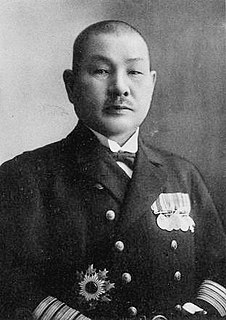 W
WThe Battle of Leyte Gulf, generally considered to be the largest naval combat in history, was fought 24–25 October 1944 in the waters of the Philippine Islands by elements of the Imperial Japanese Navy's Combined Fleet and the United States Navy's Pacific Fleet. Of the five separate engagements that made up the battle as a whole, the forces involved in the three principal ones are listed here.
 W
WThe Battle of Leyte Gulf is considered to have been the largest naval battle of World War II and, by some criteria, possibly the largest naval battle in history, with over 200,000 naval personnel involved. It was fought in waters near the Philippine islands of Leyte, Samar, and Luzon, from 23–26 October 1944, between combined American and Australian forces and the Imperial Japanese Navy (IJN), as part of the invasion of Leyte, which aimed to isolate Japan from the countries it had occupied in Southeast Asia which were a vital source of industrial and oil supplies.
 W
WThe Battle of Majorca, also known as the Majorca Landings, was an amphibious landing of Republican forces early in the Spanish Civil War aimed at driving the Nationalists from Majorca and reclaiming the island for the Republic. After some initial tactical success, the expedition, commanded by Captain Alberto Bayo, ended in failure when the Nationalists counterattacked with ground troops and massively superior air power and drove the Republicans into the sea. So confident were the Republicans in their prediction of victory they optimistically called the operation "la reconquista de Mallorca" - "the reconquest of Majorca".
 W
WThe Siege of Malta in World War II was a military campaign in the Mediterranean Theatre. From June 1940 to November 1942, the fight for the control of the strategically important island of the British Crown Colony of Malta, which pitted the air forces and navies of Fascist Italy and Nazi Germany against the Royal Air Force (RAF) and the Royal Navy.
 W
WThe Marshalls–Gilberts raids were tactical airstrikes and naval artillery attacks by United States Navy aircraft carrier and other warship forces against Imperial Japanese Navy (IJN) garrisons in the Marshall and Gilbert Islands on 1 February 1942. The Japanese garrisons were under the overall command of Vice Admiral Shigeyoshi Inoue, commander of the 4th Fleet. Japanese aircraft in the islands belonged to the IJN's 24th Air Flotilla under Rear Admiral Eiji Gotō. The U.S. warship forces were under the overall command of Vice Admiral William Halsey, Jr.
 W
WOperation MB8 was a British Royal Navy operation in the Mediterranean Sea from 4 to 11 November 1940. It was made up of six forces comprising two aircraft carriers, five battleships, 10 cruisers and 30 destroyers, including much of Force H from Gibraltar, protecting four supply convoys.
 W
WThe Battle of Midway was a significant naval battle in the Pacific Theater of World War II that took place on 4–7 June 1942, six months after Japan’s attack on Pearl Harbor and one month after the Battle of the Coral Sea. The U.S. Navy under Admirals Chester W. Nimitz, Frank J. Fletcher, and Raymond A. Spruance defeated an attacking fleet of the Imperial Japanese Navy under Admirals Isoroku Yamamoto, Chūichi Nagumo, and Nobutake Kondō near Midway Atoll, inflicting devastating damage on the Japanese fleet that rendered their ships irreparable. Military historian John Keegan called it "the most stunning and decisive blow in the history of naval warfare", while naval historian Craig Symonds called it "one of the most consequential naval engagements in world history, ranking alongside Salamis, Trafalgar, and Tsushima Strait, as both tactically decisive and strategically influential".
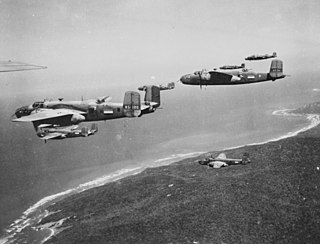 W
WThe North-Western Area Campaign was an air campaign fought between the Allied and Japanese air forces over northern Australia and the Netherlands East Indies (NEI) between 1942 and 1945. The campaign began with the Japanese bombing of Darwin on 19 February 1942 and continued until the end of the war.
 W
WFor the April 1945 invasion of Okinawa, the Allies assembled the most powerful naval force in history. Since the few remaining capital ships of the Imperial Japanese Combined Fleet had been sunk or otherwise put out of action at the Battle of Leyte Gulf, the Allies were effectively unopposed in terms of surface vessels; a single mission consisting of the superbattleship Yamato and a few escorts was undertaken, but the task force did not get within 200 nautical miles of the invasion area.
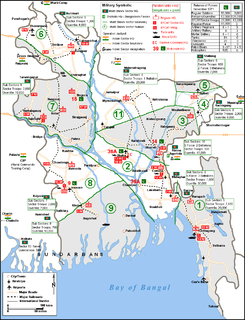 W
WThe Operation Jackpot was a codename for three operations undertaken by Bengali Mukti Bahini and Indian Army operating under the Eastern Command of the Indian Army in East-Pakistan against the Federation of Pakistan during the climax of the Bangladesh Liberation War.
 W
WOperation Orator was the code name for the defence of the Allied Arctic convoy PQ 18 by British and Australian air force units based temporarily in North-West Russia, against attack by the German battleship Tirpitz and other Kriegsmarine surface vessels. The wing, known as the Search & Strike Force, was commanded by Group Captain Frank Hopps and its maritime strike element was the Leuchars Wing, comprising No. 144 Squadron, Royal Air Force (RAF) and No. 455 Squadron, Royal Australian Air Force (RAAF) equipped with Handley-Page Hampden TB 1 torpedo bombers.
 W
WOperation Pedestal, known in Malta as Il-Konvoj ta' Santa Marija, was a British operation to carry supplies to the island of Malta in August 1942, during the Second World War. Malta was a base from which British ships, submarines and aircraft attacked Axis convoys to Libya, during the North African Campaign (1940–1943). From 1940 to 1942, the Axis conducted the Siege of Malta, with air and naval forces. Despite many losses, enough supplies were delivered by the British for the population and military forces on Malta to resist, although it ceased to be an offensive base for much of 1942. The most crucial supply item in Operation Pedestal was fuel, carried by SS Ohio, an American tanker with a British crew. The convoy sailed from Britain on 3 August 1942 and passed through the Strait of Gibraltar into the Mediterranean on the night of 9/10 August.
 W
WThe Battle of the Philippine Sea was a major naval battle of World War II that eliminated the Imperial Japanese Navy's ability to conduct large-scale carrier actions. It took place during the United States' amphibious invasion of the Mariana Islands during the Pacific War. The battle was the last of five major "carrier-versus-carrier" engagements between American and Japanese naval forces, and pitted elements of the United States Navy's Fifth Fleet against ships and aircraft of the Imperial Japanese Navy's Mobile Fleet and nearby island garrisons. This was the largest carrier-to-carrier battle in history, involving 24 aircraft carriers, deploying roughly 1,350 carrier-based aircraft.
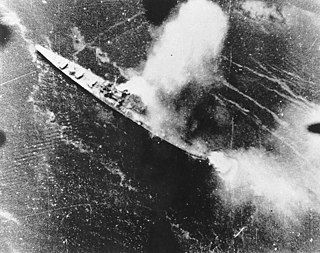 W
WThe Allies of World War II conducted an air attack upon a cruiser force at the major Japanese base of Rabaul in November 1943. In response to the Allied invasion of Bougainville, the Japanese had brought a strong cruiser force down from Truk, their major naval base in the Caroline Islands about 800 miles north of Rabaul, to Rabaul in preparation for a night engagement against the Allied supply and support shipping. Allied carrier- and land-based planes attacked the Japanese ships, airfields, and port facilities on the island of New Britain to protect the Allied amphibious invasion of Bougainville. As a result of the Rabaul raids, the Japanese naval forces could no longer threaten the landings. The success of the raid began to change the strongly held belief that carrier-based air forces could not challenge land-based air forces.
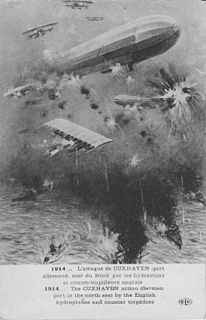 W
WThe Raid on Cuxhaven was a British ship-based air-raid on the Imperial German Navy at Cuxhaven mounted on Christmas Day, 1914.
 W
WThe Battle of Rennell Island took place on 29–30 January 1943. It was the last major naval engagement between the United States Navy and the Imperial Japanese Navy during the Guadalcanal Campaign of World War II. It occurred in the South Pacific between Rennell Island and Guadalcanal in the southern Solomon Islands.
 W
WThe Battle of San Carlos was a battle between aircraft and ships that lasted from 21 to 25 May 1982 during the British landings on the shores of San Carlos Water in the 1982 Falklands War. Low-flying land-based Argentine jet aircraft made repeated attacks on ships of the British Task Force.
 W
WThe Battle of the Santa Cruz Islands was fought 25–27 October 1942 in the waters northwest of the Santa Cruz Islands by forces of the Imperial Japanese Navy's (IJN) Combined Fleet and the United States Navy's (USN) Pacific Fleet. The battle resulted from a major Japanese offensive with the goal to drive the US forces from Guadalcanal.
 W
WThe South China Sea raid was an operation conducted by the United States Third Fleet between 10 and 20 January 1945 during the Pacific War of World War II. The raid was undertaken to support the liberation of Luzon in the Philippines, and targeted Japanese warships, supply convoys and aircraft in the region.
 W
WThe Battle of Taranto took place on the night of 11–12 November 1940 during the Second World War between British naval forces, under Admiral Andrew Cunningham, and Italian naval forces, under Admiral Inigo Campioni. The Royal Navy launched the first all-aircraft ship-to-ship naval attack in history, employing 21 Fairey Swordfish biplane torpedo bombers from the aircraft carrier HMS Illustrious in the Mediterranean Sea.
 W
WOperation Ten-Go , also known as Operation Heaven One, was the last major Japanese naval operation in the Pacific Theater of World War II. The resulting engagement is also known as the Battle of the East China Sea.
 W
WTirpitz was the second of two Bismarck-class battleships built for Nazi Germany's Kriegsmarine (navy) prior to and during the Second World War. Named after Grand Admiral Alfred von Tirpitz, the architect of the Kaiserliche Marine, the ship was laid down at the Kriegsmarinewerft Wilhelmshaven in November 1936 and her hull was launched two and a half years later. Work was completed in February 1941, when she was commissioned into the German fleet. Like her sister ship, Bismarck, Tirpitz was armed with a main battery of eight 38-centimetre (15 in) guns in four twin turrets. After a series of wartime modifications she was 2000 tonnes heavier than Bismarck, making her the heaviest battleship ever built by a European navy.
 W
WOperation Vigorous was a British operation during the Second World War, to escort supply convoy MW11 from the eastern Mediterranean to Malta, which took place from 11–16 June 1942. Vigorous was part of Operation Julius, a simultaneous operation with Operation Harpoon from Gibraltar and supporting operations. Sub-convoy MW11c sailed from Port Said on 11 June, to tempt the Italian battlefleet to sail early, use up fuel and be exposed to submarine and air attack. MW11a and MW11b sailed next day from Haifa, Port Said and Alexandria, one ship being sent back because of defects. Italian and German (Axis) aircraft attacked MW11c on 12 June and a damaged ship was diverted to Tobruk, just east of Gazala. The merchant ships and escorts rendezvoused on 13 June. The British plans were revealed unwittingly to the Axis by the US Military Attaché in Egypt, Colonel Bonner Fellers, who reported to Washington, D.C. in coded wireless messages. The Black Code was later revealed by Ultra to have been broken by the Servizio Informazioni Militare.
 W
WYankee Station was a fixed coordinate off the coast of Vietnam where U.S. Navy aircraft carriers and support ships loitered in open waters over a nine-year period during the Vietnam War. The location was used primarily by aircraft carriers of Task Force 77 to launch strikes over North Vietnam. While the coordinate's official designation was "Point Yankee", it was universally referred to as Yankee Station. Carriers conducting air operations at Yankee Station were said to be "on the line" and statistical summaries were based on days on the line. Yankee Station was initially located at 16° 00′ N, 110° 00′ E, however with a massive increase in operations over North Vietnam in 1966 the station was moved about 145 miles northwest to 17° 30′ N, 108° 30′ E, placing it about 90 miles from the North Vietnamese shore.
 W
WThe attack on Yokosuka was an air raid conducted by the United States Navy on 18 July 1945 during the last weeks of the Pacific War. The Japanese battleship Nagato was the raid's main target, though anti-aircraft positions and other warships at Yokosuka Naval Arsenal were also attacked. Other U.S. Navy and Royal Navy aircraft struck airfields in the Tokyo area.